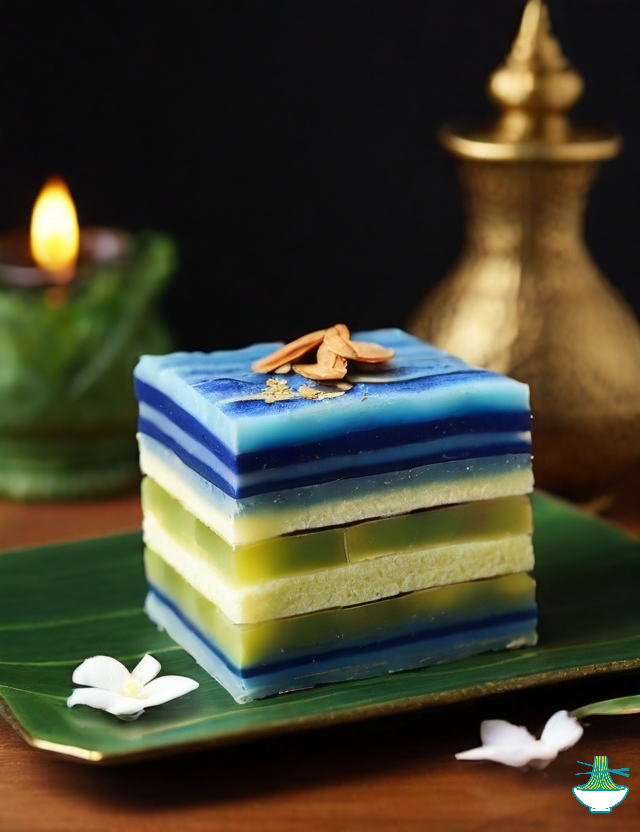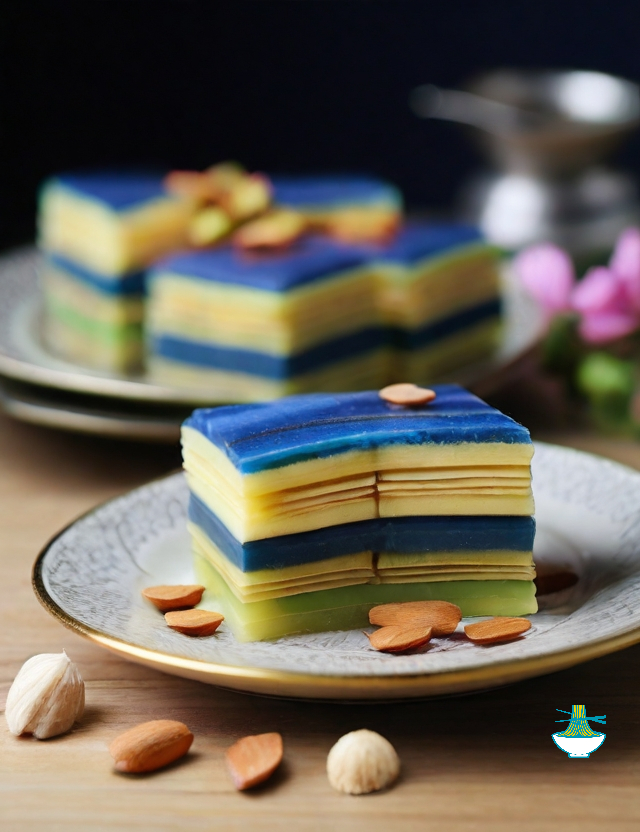Embark on a culinary adventure through the rich and diverse tapestry of Brunei's traditional cuisine with our featured recipe—Kueh Lapis. This delectable treat, known for its intricate layers and vibrant flavors, holds a special place in Bruneian culture and is a beloved sweet indulgence for locals and visitors alike.
Kueh Lapis, meaning "layered cake" in Malay, is a sweet delicacy that reflects the cultural heritage of Brunei. With its origins deeply rooted in the region, this dessert has evolved over generations, showcasing the culinary prowess and creativity of Bruneian cooks.
In this culinary exploration, we will guide you through the step-by-step process of creating Brunei's Kueh Lapis, from selecting the finest ingredients to mastering the art of layering. Get ready to unlock the secrets behind this delightful treat and bring the flavors of Brunei into your own kitchen. Let's dive into the world of Brunei's Kueh Lapis—a culinary masterpiece that promises to enchant your taste buds with every delicious layer.
Ingredients:
- 2 cups rice flour
- 2 cups coconut milk
- 1 cup sugar
- 1/2 teaspoon salt
- 1/2 teaspoon pandan extract (optional, for color and flavor)
- Water (as needed for thinning the batter)
- Margarine or cooking oil (for greasing)

Instructions:
Prepare the Batter:
1-In a large mixing bowl, combine rice flour, coconut milk, sugar, salt, and pandan extract (if using).
2-Stir the mixture well until the sugar is completely dissolved. The consistency should be smooth and free of lumps.
Thin the Batter:If the batter is too thick, gradually add water until you achieve a pourable consistency. The batter should be thin enough to spread easily but not too watery.
Grease the Pan:Grease the baking pan with margarine or cooking oil to prevent sticking. You can use a square or rectangular pan depending on your preference for the thickness of the layers.
Layering Process:
1-Pour a thin layer of the batter into the greased pan, ensuring it covers the bottom evenly.
2-Steam the layer over medium heat for 5-7 minutes or until set.
Repeat the Layers:Once the first layer is set, pour another layer of batter on top and steam again. Continue this process until you have used all the batter. Make sure each layer is cooked before adding the next.
Cooling and Cutting:Allow the Kueh Lapis to cool completely before cutting into squares or rectangles. This will help the layers to set properly.
Serve and Enjoy:Once cooled and cut, your Brunei Kueh Lapis is ready to be served. Enjoy this delightful layered cake with a cup of tea or coffee.
Feel free to experiment with the thickness of the layers and adjust the sweetness to suit your taste. This Brunei Kueh Lapis recipe offers a wonderful combination of textures and flavors, making it a perfect treat for any occasion.
Nutritional Values
Nutritional values can vary based on the specific brands and types of ingredients used, as well as the serving sizes. Below are general estimates for the nutritional content of the listed ingredients per cup, where applicable:
Rice Flour (1 cup):
- Calories: 578
- Total Fat: 1.6g
- Saturated Fat: 0.4g
- Cholesterol: 0mg
- Sodium: 6mg
- Total Carbohydrates: 122g
- Dietary Fiber: 2.2g
- Sugars: 0.6g
- Protein: 12g
Benefit: A gluten-free alternative to wheat flour, rice flour is rich in carbohydrates and provides energy. It is also a source of fiber and various minerals, including iron.
Coconut Milk (1 cup):
- Calories: 552
- Total Fat: 57.2g
- Saturated Fat: 50.7g
- Cholesterol: 0mg
- Sodium: 32mg
- Total Carbohydrates: 6.6g
- Dietary Fiber: 5.3g
- Sugars: 0.7g
- Protein: 5.6g
Benefit: Coconut milk adds a rich and creamy texture to the recipe. It contains healthy fats known as medium-chain triglycerides (MCTs), which can provide a quick source of energy. Additionally, coconut milk is a source of vitamins and minerals like iron.
Sugar (1 cup):
- Calories: 774
- Total Fat: 0g
- Saturated Fat: 0g
- Cholesterol: 0mg
- Sodium: 1mg
- Total Carbohydrates: 200g
- Dietary Fiber: 0g
- Sugars: 200g
- Protein: 0g
Benefit: While sugar primarily adds sweetness to the dish, it also contributes quick energy. However, it's essential to consume sugar in moderation to maintain a balanced diet.
Salt (1/2 teaspoon):
- Negligible caloric value
Benefit: Salt enhances the overall flavor of the dish. It also plays a crucial role in regulating fluid balance, nerve function, and muscle contractions in the body.
Pandan Extract (1/2 teaspoon):
- Negligible caloric value
Benefit: Pandan extract is derived from the leaves of the pandan plant and is used for its unique flavor and green color. It adds a pleasant aroma and taste to the dish. Pandan leaves are also believed to have antioxidant properties.
Margarine or Cooking Oil (for greasing):
The nutritional values will depend on the specific type and amount used. For a tablespoon of margarine, it's approximately:
- Calories: 102
- Total Fat: 11.5g
- Saturated Fat: 2.3g
- Cholesterol: 0mg
- Sodium: 95mg
- Total Carbohydrates: 0g
- Dietary Fiber: 0g
- Sugars: 0g
- Protein: 0g
Benefit: Margarine or cooking oil is used to grease the pan, preventing the Kueh Lapis from sticking. While these ingredients add some fat to the recipe, they also enhance the texture and mouthfeel of the final product.
It's important to note that these values are general estimates and can vary based on the actual products you use. Additionally, the water used for thinning the batter contributes negligible calories and nutrients. If you're looking for more accurate nutritional information, it's recommended to use specific product labels or nutritional databases for the exact brands and quantities you use in your recipe.


Comments